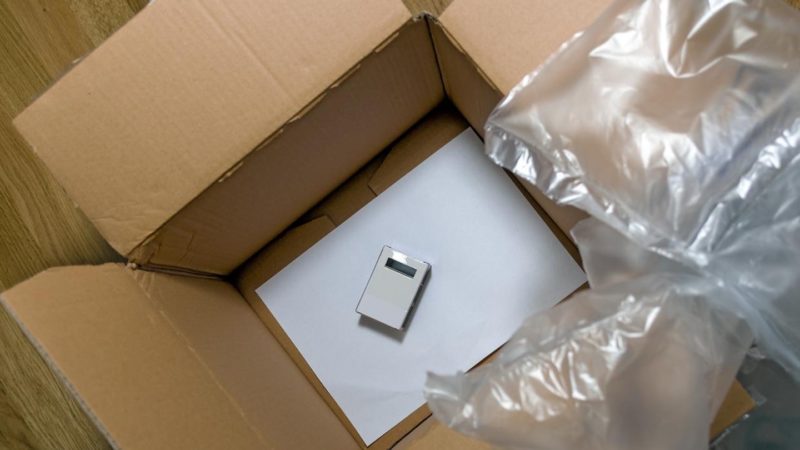
What is the relation between Parcel Pricing and Sustainable Logistics? How parcel pricing can be leveraged to help deliver sustainable logistics solutions? We answer these questions in the new episode of Postal Hub Podcast with Open Pricer.
The discussion revolves around:
- The relationship between pricing and sustainability
- Are consumers ready to pay for environmentally efficient delivery solutions?
- Using pricing to drive consumer decisions
- Environmental performance indicators
- Improving network efficiency – increasing fleet capacity utilization and the resulting environmental benefits
- Helping e-commerce retailers
- Pricing: gross weight, volumetric, and volume
- Open Pricer’s cloud pricing platform
How can Digital Pricing contribute to Sustainable Logistics?
This article is based on the aforementioned Episode 298 of the Postal Hub podcast: Interview of Daniel Rueda (CEO at Open Pricer) by Ian Kerr.
What is the relationship between pricing and sustainability?
This relationship is not obvious at first glance, but pricing is one of the essential and still untapped levers of sustainable development. There will be early April in Paris, the first “Pricing for the Planet Summit”. It is a generalist summit that concerns many verticals. In addition to discussing the importance of sustainability for corporate brand image, which is a key component of the market value of products, this conference will also discuss how pricing strategy should help offset the costs of eco-investments and achieve sustainability objectives on time.
Let’s focus on Logistics, Parcel carriers have ambitious goals to reach zero emissions in the next two decades and they are investing in new technologies to reach this goal: electric vehicles for the last mile, e-fuel and fuel cell technology for linehauls. DB Schenker, for instance, has tested the first hydrogen powered 40 tons truck a couple of weeks ago. These investments are massive and they need to be financed. This is where pricing comes into play. The question is: how can the cost of these efforts be passed on to shippers, retailers and, ultimately, to consumers.
This issue of paying is very sensitive. Are consumers ready to pay?
Most of customers are environmentally conscious with some differences depending on the country. In Nordic countries and Germany, customers are more conscious than in other parts of the world. But there are some paradoxes. For example, in Germany customers have a strong preference for home delivery. Lockers and parcel shops have not been a real success.
Auctane’s “Ecommerce Delivery Benchmark Report 2023” analyzes decision factors for the choice of parcel delivery. The first criteria is Price, then comes Speed, then Convenience: home delivery is a more convenient solution than out of home delivery – through lockers, parcel shops, post offices that may soon deliver parcels in their self-service kiosks 24/7. The 4th factor is Returns’ flexibility and the last is Eco-friendliness.
German politicians and Deutsche Post are calling for the introduction of compulsory CO2 labels on parcels. We are a little bit skeptical about this measure because a carbon footprint calculation will not help the consumer to make the right choice. However, the idea is indeed to provide the consumer at decision time with a clear and simple indicator of the environmental performance of each delivery solution. Not a carbon footprint calculation, but a visual indicator. For example, a green leaf to highlight the best decisions and make the trade-off with other criteria like price, speed and convenience, easier for the online shopper. The most eco-friendly solution, such as a parcel shop or a locker delivery, should be the least expensive to encourage switching to this solution. And the least eco-friendly shall support a premium representing an eco-tax.

Are there other ways to use rating to change behaviors and lead to a reduction in emissions?
We discussed the behavior of the customer, but there are other ways to use pricing to reduce emissions and this is related to increasing network efficiency. Today, carriers are investing in new fleets of electrical vehicles. Tomorrow they will use fuel cell technology and e-fuels. However, these new technologies are not the only way to reduce emissions. We must also consider improving network efficiency. Increasing fleet capacity utilization to deliver the same number of parcels with less trucks on the road can also play an important role. For instance, increasing the load factor from 70% (a possible estimate of the current average in the industry) to 85% (an ambitious but rachievable target) would reduce emissions by 17.6%. Dynamic pricing can play a key role in this regard. Just think about the way hotels, airlines and railways use pricing to smooth peaks of demand and fill empty capacity.
In addition to Linehaul capacity, this can also apply to Pickup capacity and Delivery capacity which can be measured by the number of stops per hour.
However, load factors are not yet measured by many carriers. In the airline industry that has been applying Dynamic Pricing for more than 40 years, the load factor is an obsession. Managers have daily reports of the load factor of each flight. A big change for carriers would be to start thinking about having these reports on a daily basis. Increasing the load factor of vehicles translates into carrying a higher number of parcels with the same number of vehicles. By using their networks more efficiently thanks to dynamic pricing, carriers can limit additional capacity, reduce operating costs and increase their eco-performance.
Can we build environmental performance indicators for the shippers and online retailers?
We have built some KPIs to estimate for instance, the “Peak Share” of a given shipper. The peak share is a function of the percentage of shipments when or where the network is saturated or close to saturation and additional capacity is required. Another KPI is “Shipping Predictability”: Some customers have a seasonal shipping profile with significant variation by day of week, but you can predict their daily shipping activity quite well. Others have a very erratic profile and you cannot predict their shipping on a given day. It’s easy to understand that this causes more pressure on operations that need to adjust capacity on a daily basis. At the end, this leads to more emissions. Because with a non-predictable shipping activity, you cannot optimize capacity.
These environmental KPIs are very useful in review meetings with large retailers and when renegotiating price increases. More generally, a better collaboration between carriers and shippers will help to improve network efficiency and reduce emissions.
In return, what impacts can sustainability requirements and demands have on pricing?
Today, the industry standard pricing factor is the gross weight of parcels. However, the most important cost factor is not weight but volume (cm3) because the capacity of vehicles is first saturated by volume, not by weight. A nightmare for the environment is a very big and very light package with low revenue and at the same time high cost for the company and for the environment. Consequently, it’s the right time to change the pricing factor and charge by volumetric weight in domestic services and why not, by volume (cm3). This requires investments in measurement devices to capture the real dimensions of the packages. Another idea is to use the value of goods as a pricing factor above a certain threshold because the willingness to pay of the consumer obviously depends on the value of the good.

What Open Pricer can offer to carriers in the field of Dynamic Pricing and sustainability ?
Open Pricer primarily provides a cloud pricing platform that is used by sales teams to acquire new business and develop existing contracts at the best possible contribution margin. This platform can also help to improve network efficiency and contribute to reaching sustainability objectives on time.
If you want to know more about our services and what we can provide to you, contact our pricing experts.
